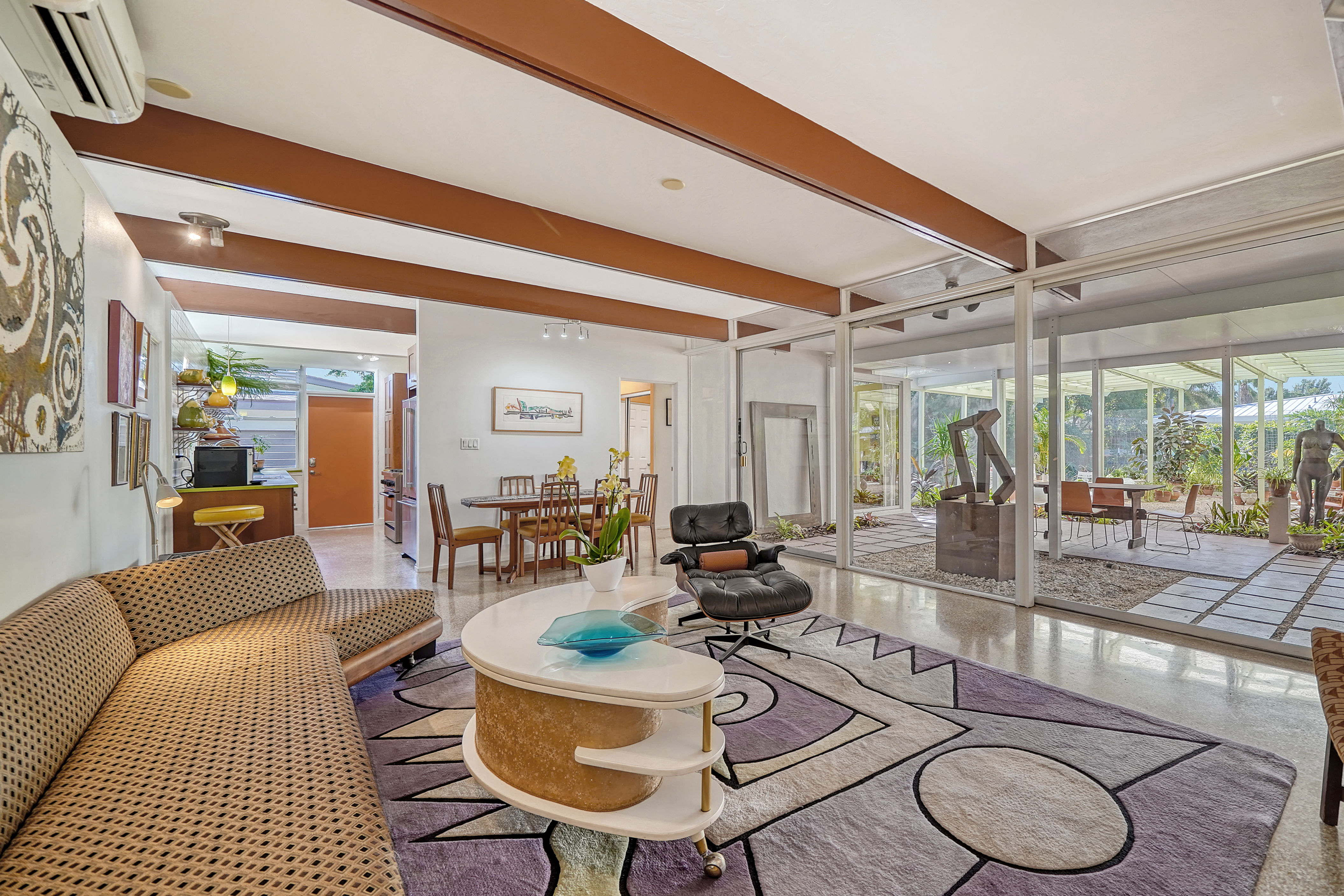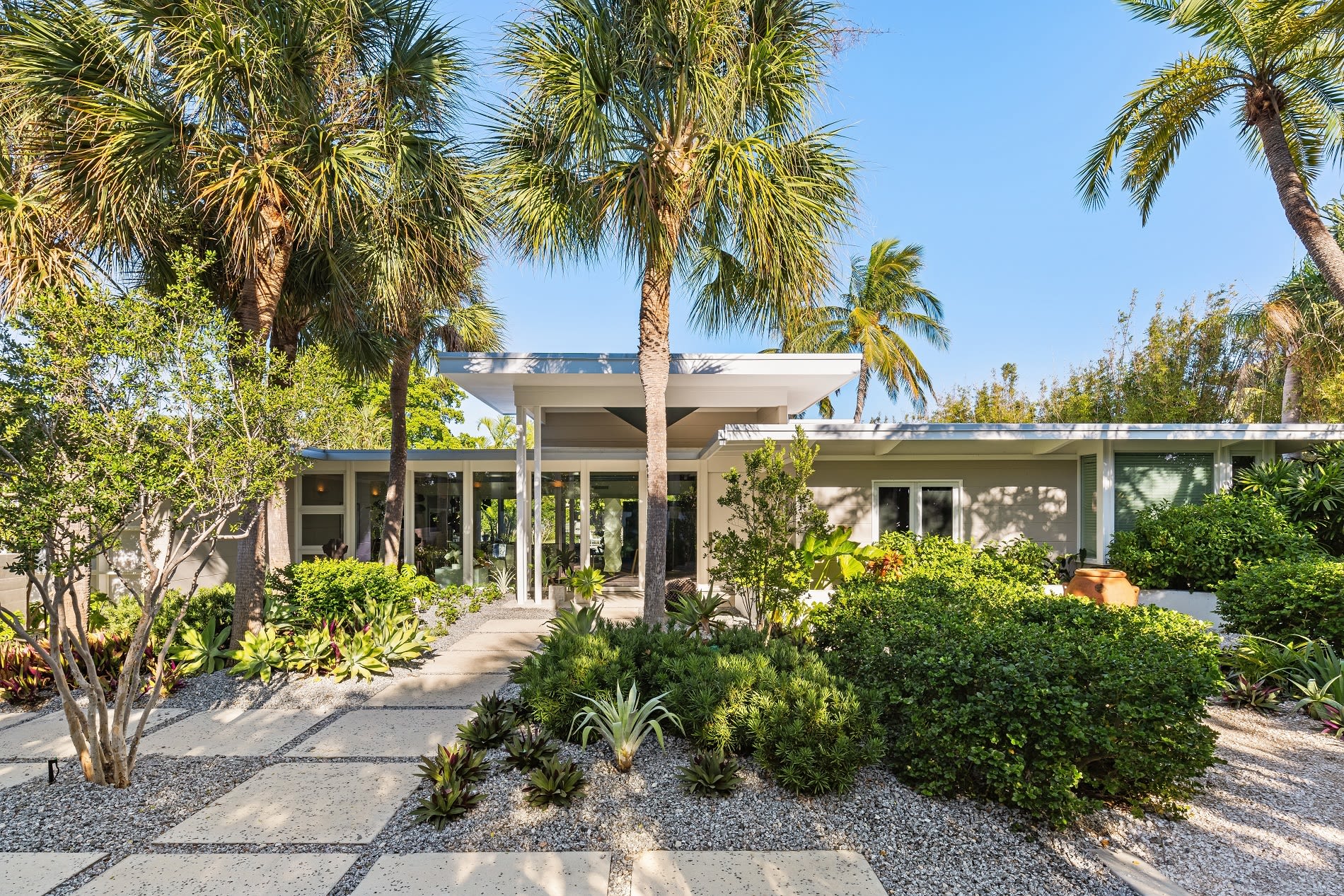Essential Intelligence About the Sarasota School of Architecture
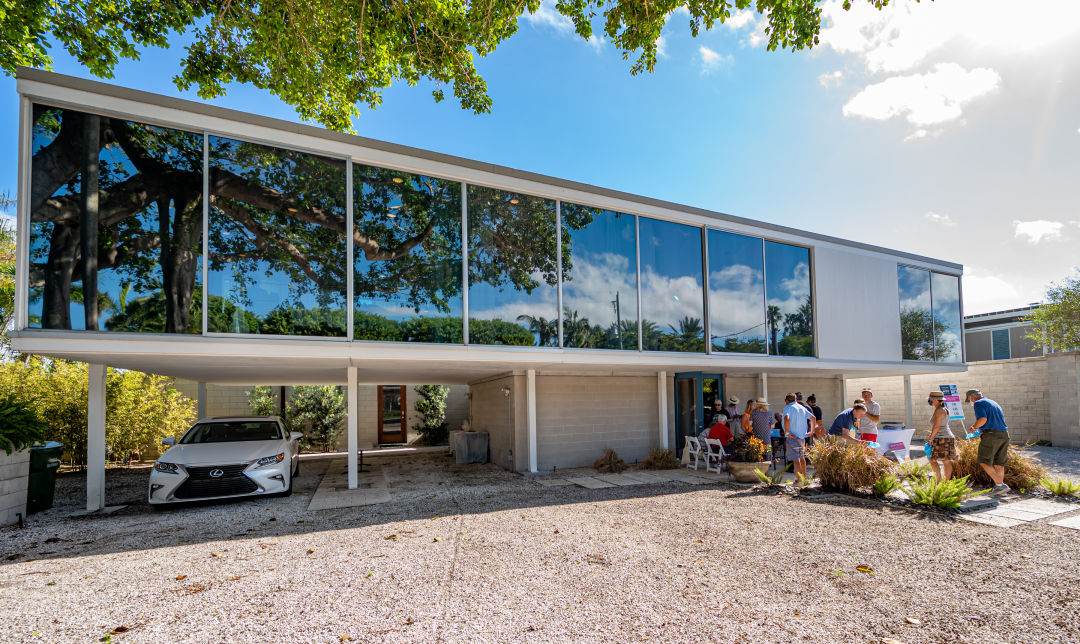
Hiss Studio during MOD weekend home tours in Lido Shores last weekend.
Image: Peter Acker Photography
With so many new residents flocking to Sarasota, there’s something they ought to know outside of its gorgeous beaches and thriving arts scene.
Sarasota is ground zero for a midcentury modern architectural movement called the Sarasota School of Architecture. If you missed out on the annual Sarasota MOD Weekend, which celebrates the movement with home tours, symposiums and more, save the date for the 10th anniversary event next year.
In the meantime, here are some basics about the Sarasota School—plus photos from this year's event—to help you sound like a long-time aficionado.
History
The post-World War II Sarasota School movement lasted from just 1941 to 1966 but left an indelible mark. Its most heralded names include Philip Hiss, Ralph Twitchell, Paul Rudolph, Victor Lundy, Jack West and Gene Leedy. Many of the original Sarasota School homes are in the Lido Shores neighborhood, but other examples from the school can also be found on Siesta Key and throughout the city. Some even step outside the residential scope, like Sarasota High School and the South Gate Community Center.
Some of the more iconic homes include the Zigzag House, Umbrella House and Hiss Studio. The Revere Quality House and Cocoon House on Siesta Key are other prime examples of the style.
The designs incorporated new materials for the time, such as terrazzo, concrete and even copper. They also used local materials, like cypress and cedar wood. Signature architectural features include wide roof overhangs, simple lines, louvered walls and shutters, and open floor plans. The idea was to respond to the local climate, with innovative ways of capturing and deflecting natural light, shade and ventilation.
The effects make for gorgeous and simple spaces that are easy to love. Here's a look at some of the Sarasota School of Architecture homes featured during this year's MOD Weekend home tours in Lido Shores.
Walls Down
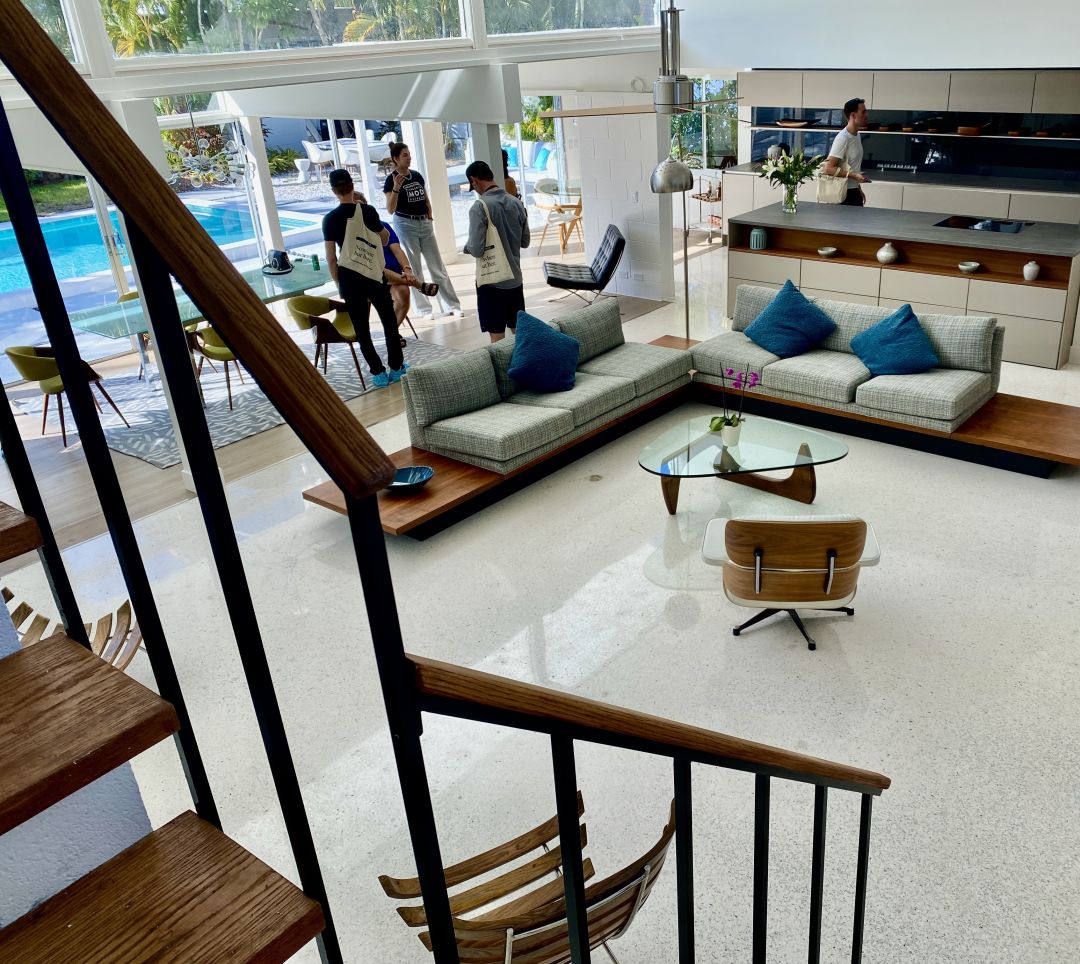
A Sarasota School of Architecture home during the MOD Weekend home tour.
Image: Kim Doleatto
Responding to and living in harmony with the geography lent itself to open-plan structures to facilitate ventilation—remember, this was before AC rocked our world.
Glass Galore
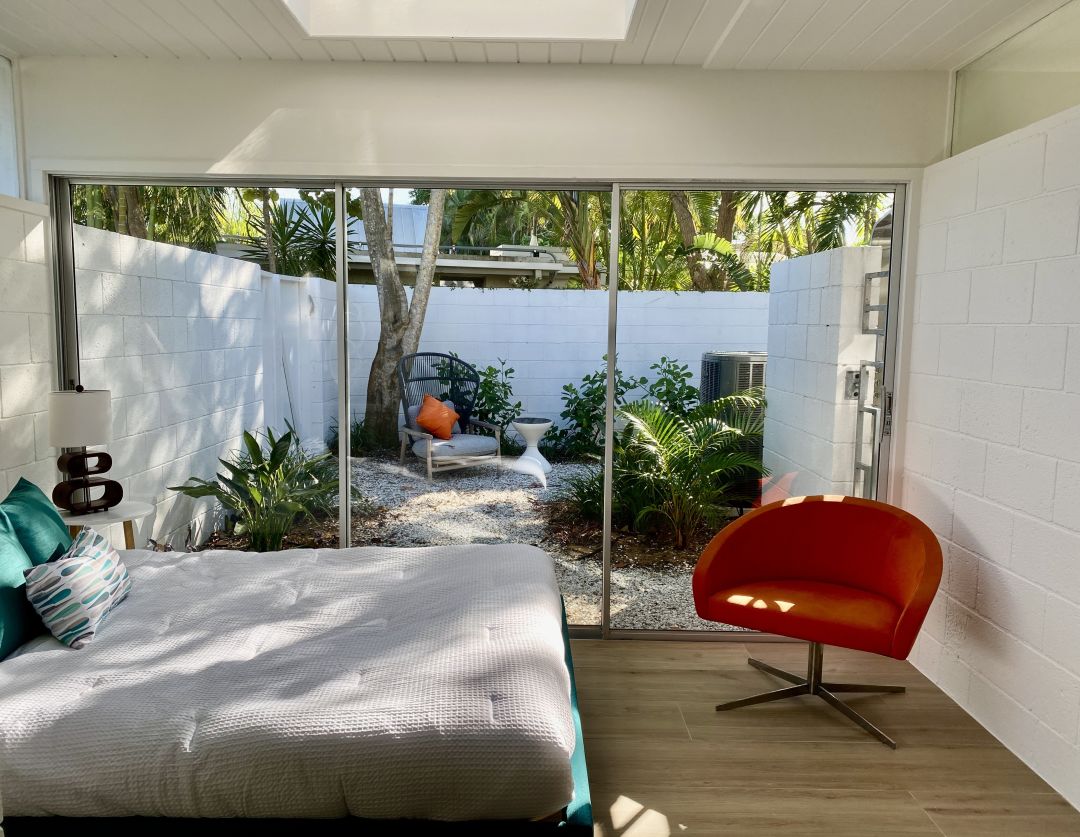
Sliding glass doors let the light in.
Image: Kim Doleatto
Large panes of glass facilitate natural light and ventilation. Jalousie windows that had opening slats and sliding glass doors were a must.
Built Ins
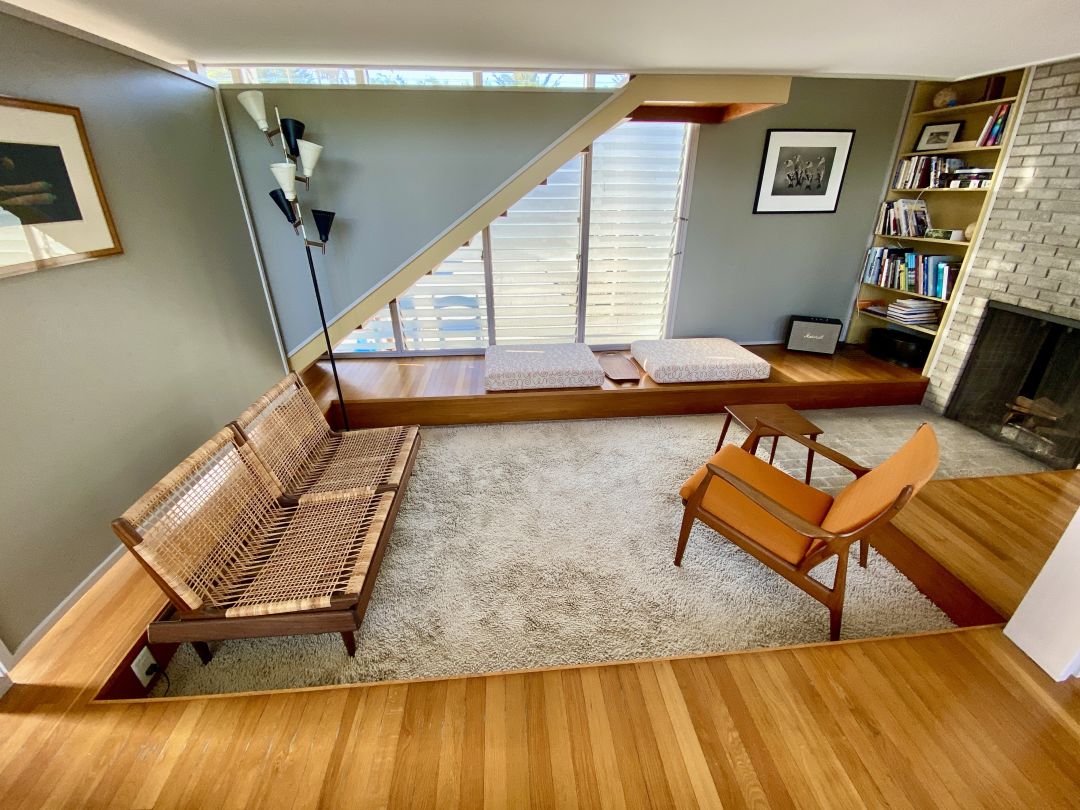
Built-ins were used for shelves, fireplaces and in this case, even seating.
Image: Kim Doleatto
Many Sarasota School homes had built-in storage and shelving, eschewing the need for free-standing armoires and furniture that can clutter a space.
A Place in The Shade
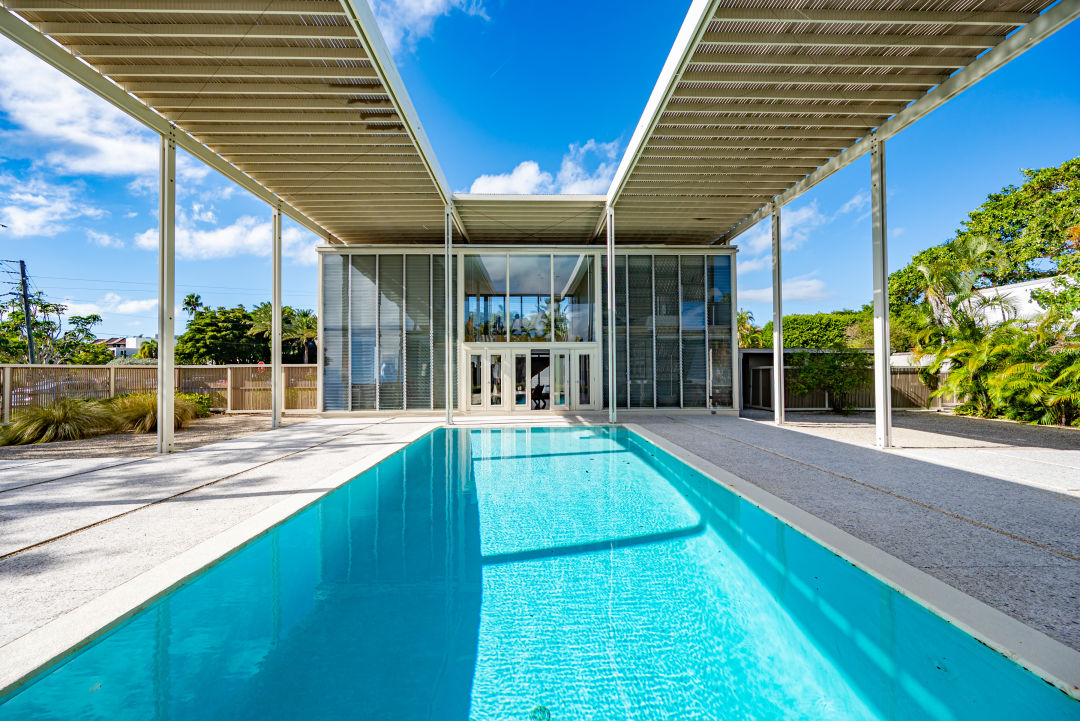
The Umbrella House is the ultimate example of employing shade structures.
Image: Peter Acker Photography
Cantilevered overhangs kept homes cooler by intercepting sunlight and providing shade. The one on the Umbrella House, above, is the most iconic.
Clerestory Windows
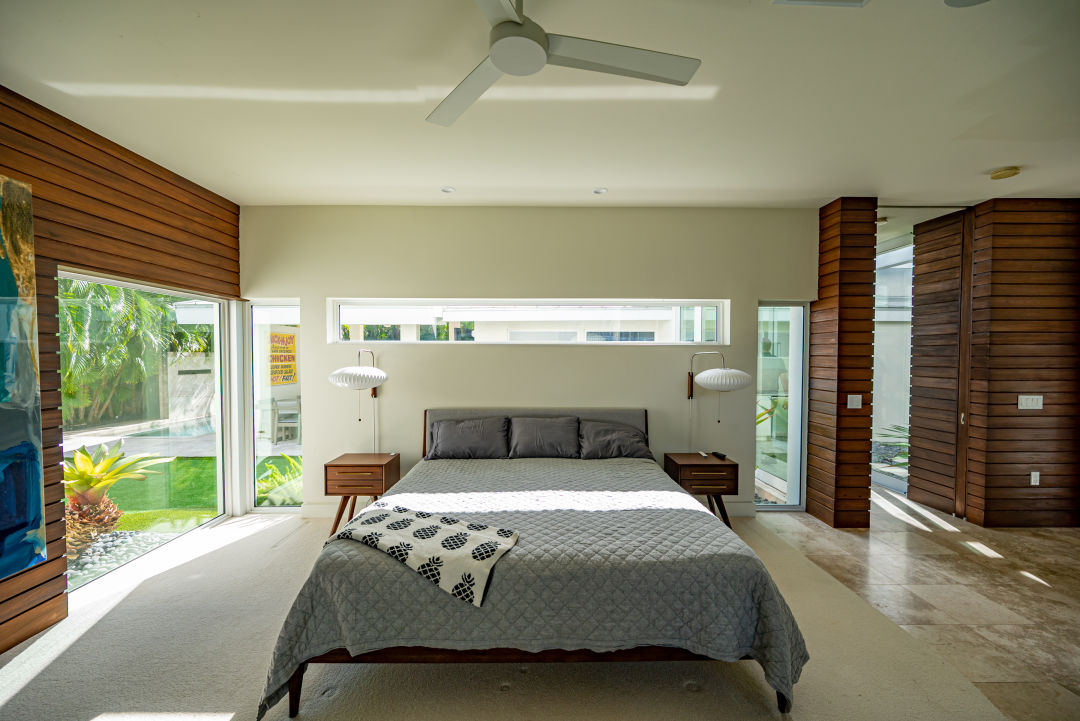
Clerestory windows
Image: Peter Acker Photography
These narrow, rectangular windows are placed above eye level to illuminate interiors with natural light—typically in a row right below the roofline. They also offer privacy without sacrificing natural light. By freeing up wall space, clerestory windows allow for more built-in storage (see above), wall art and other interior design elements.
The Blurring of Inside and Out
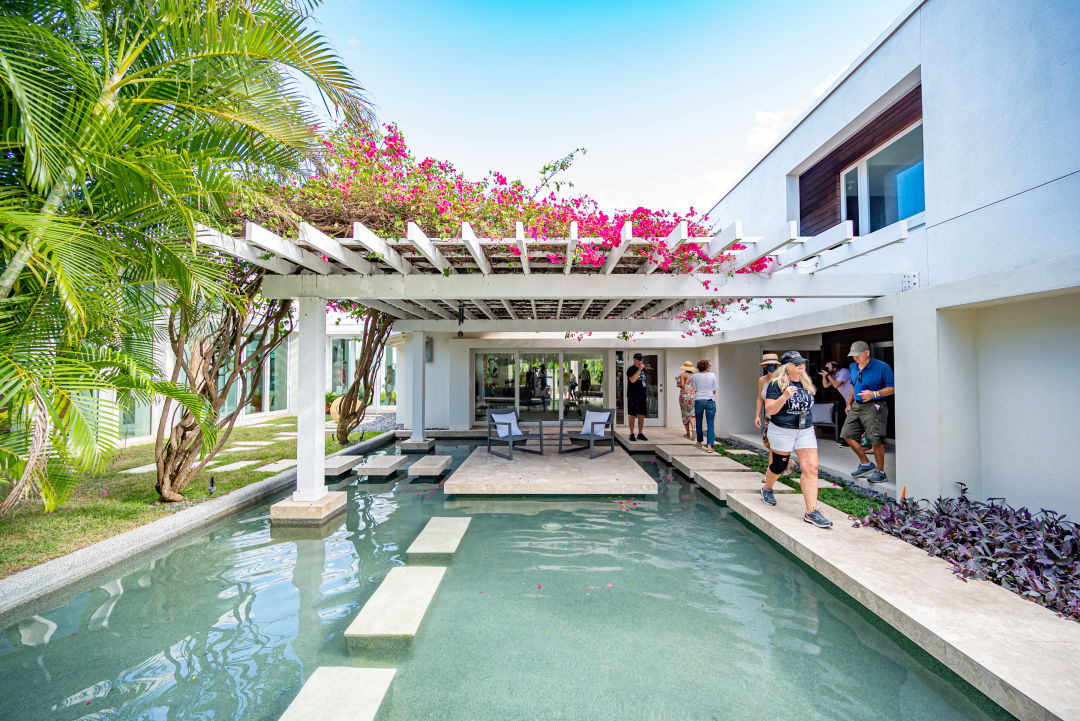
Outdoor seating areas mimic indoor living rooms.
Image: Peter Acker Photography
Glass walls and outdoor seating make inside and out melt into each other.
The Details Are in The Lack Thereof
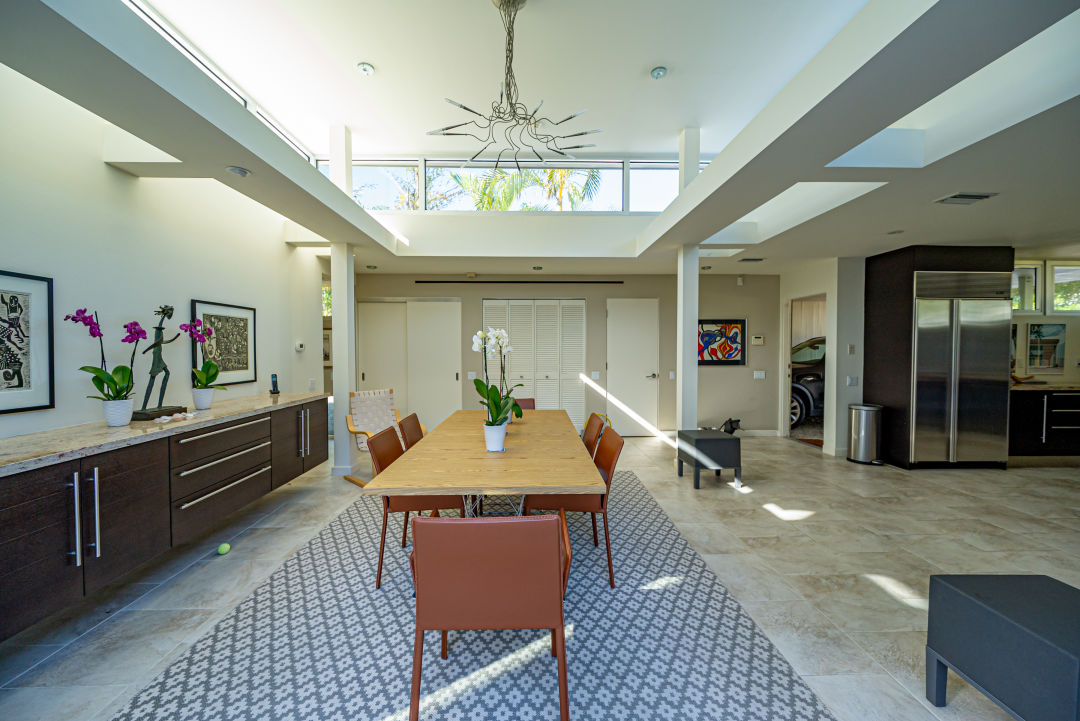
Simplicity over glitz
Image: Peter Acker Photography
Sarasota School homes eschew vaulted ceilings, archways, or unnecessary ornamentation. Sometimes there’s a zigzag, but otherwise, architectural lines stay horizontal and vertical, for a clean, simple look.
Although revered by historians, architects, critics and fans today, between 1960 and 1990, most of the midcentury modern structures in Sarasota fell into disrepair and were demolished. In fact, the majority of the Sarasota School of Architecture homes in Lido Shores are on the interior roads; many on the water have been torn down over the years to make way for larger homes—especially since most of the original homes were barely over 2,000 square feet.
Follow Architecture Sarasota for more opportunities to get up, close and personal to these iconic structures with home tours and more.
